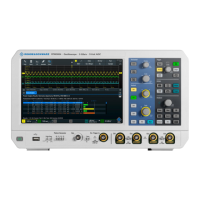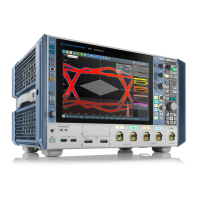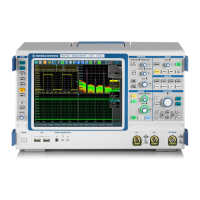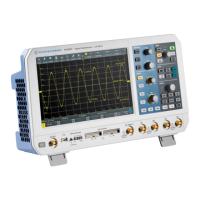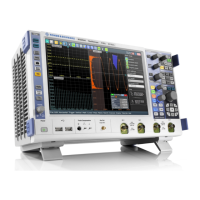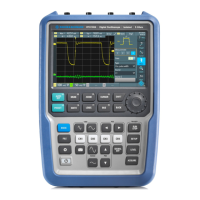Acquisition and Waveform Setup
R&S
®
RTM20xx
14User Manual 1317.4726.02 ─ 01
Fig. 2-2: Waveforms acquired with different sample rates
This means that the sample rate must be set to a value 3 to 5 times the fastest frequency
component of the signal. A higher sample rate increases signal fidelity, increases the
chance to capture glitches and other signal anomalies, and improves the zoom-in capa-
bilities.
2.1.2.2 Acquisition Settings
The resulting sample rate can be the same as the constant ADC sample rate, or higher,
or lower.
By default, the real time sample mode is used. With fast time base settings, the sample
rate becomes higher than the ADC sample rate. The missising waveform samples are
added to the ADC samples with sin(x)/x interpolation automatically.
When measuring high-frequency, repetitive signals whose frequency components are
even higher than the ADC sample rate, equivalent-time sampling is used to capture
the waveform. This sample mode captures ADC samples over a number of subsequent
repetitions at different points in time, and creates one waveform with higher sample rate
from this data.
At lower time base settings, the required sample rate is lower than the ADC sample rate.
To reduce the sample rate, decimation methods are used: sample and peak detect.
As digital waveform data is stored in the memory, and the memory can save many wave-
form records, further waveform arithmetic processing is possible: average and enve-
lope waveforms are resulting waveforms, created from a composite of sample points
taken from multiple acquisitions. Another function called smoothing calculates a mean
Basics
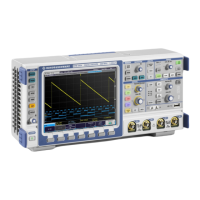
